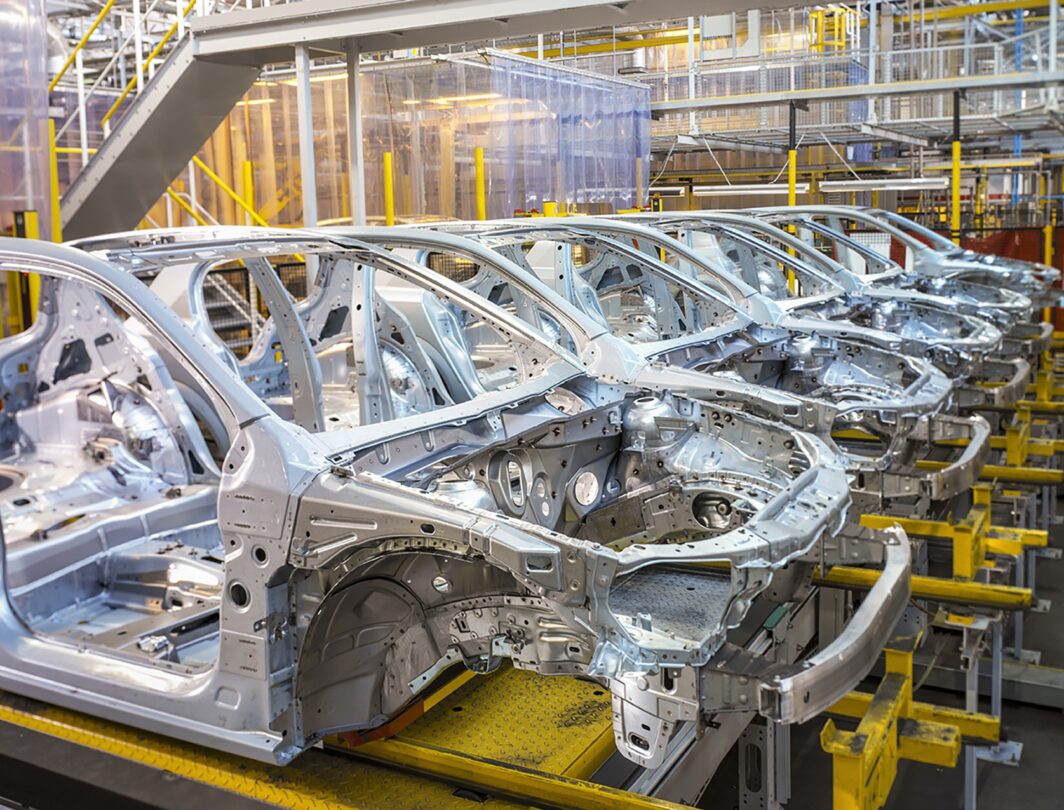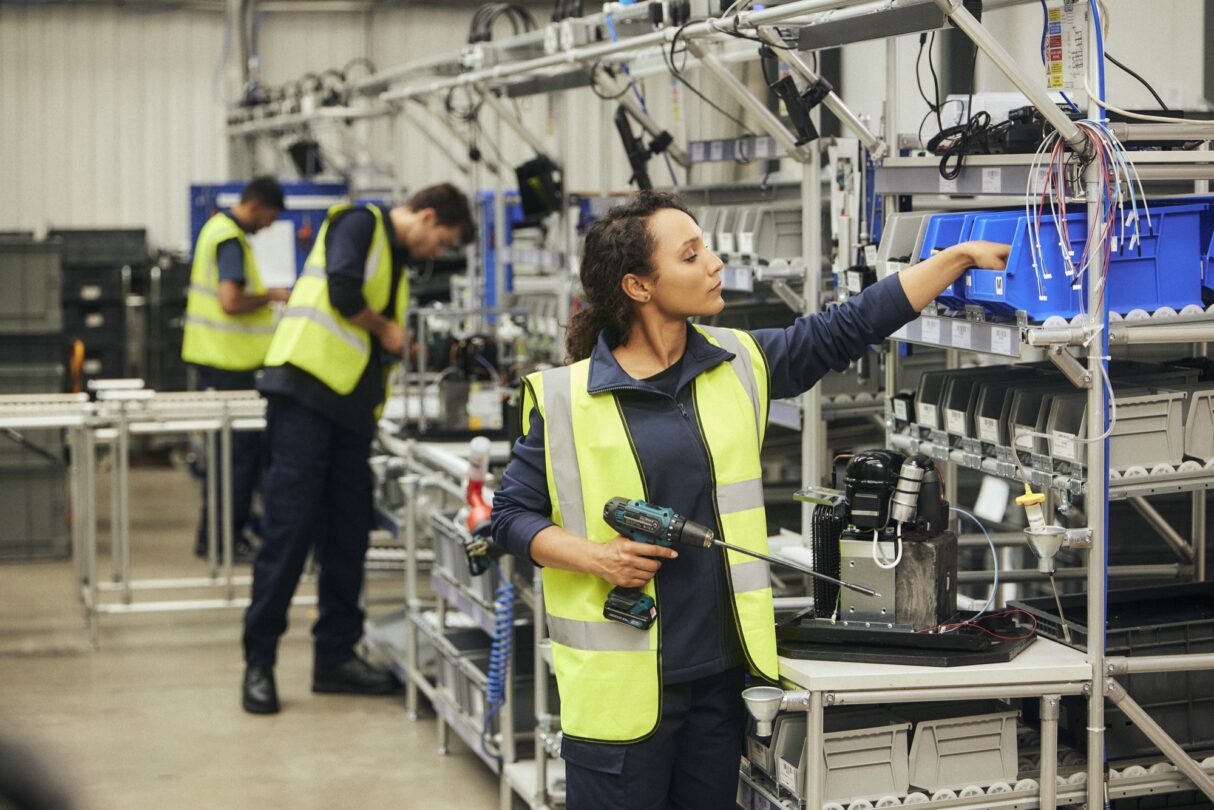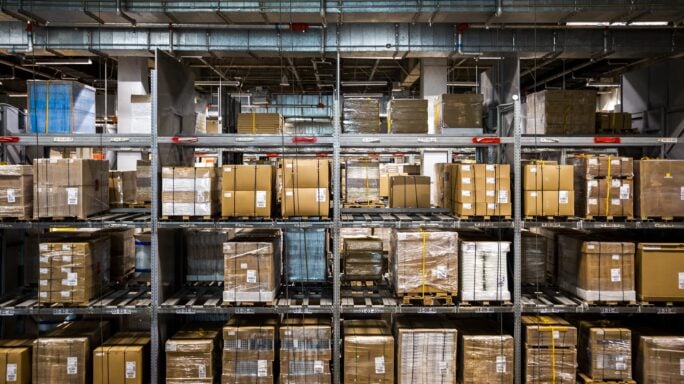Why all automotive industry leaders need to join the battery-powered revolution

The automotive industry is important to us all. It’s a sector that has a direct, powerful impact on many people’s lives – vehicles of all shapes and sizes are everywhere we look, with cars being part of our culture for more than a hundred years. The popularity of programs like Top Gear, The Grand Tour and even the Fast and the Furious film series is a true testament to that.
Currently, like many industries where technology has an obvious discernible impact, the automotive industry is going through significant and disruptive change.
One area is with the growth of the electric vehicle (EV) – with increasingly strict government regulations, reliance on expensive and insecure fossil fuels that will one day run out, and the threat of global warming, electric-powered vehicles have become an alternative to the petrol-powered gas guzzlers we know and love.
Morgan Stanley believes that an electric-powered future is in sight and that by 2050, we could see one billion battery-powered electric vehicles (BEVs) on the road worldwide (90% of all vehicles sales), spurred by legislation which could sharply increase the cost of internal combustion engines.
Although electric cars have uncertainties and disadvantages, the fact that new contenders like Tesla and Dyson have entered the market, while the automotive giants like Toyota and Nissan are investing hugely in the technology, shows that manufacturers are already well underway with change.
Volkswagen, another substantial international automotive company, also recently picked partners to provide battery cells and related technology worth around $25 billion US dollars. Its ‘Dieselgate’ emissions scandal two and a half years ago prompted a strategic shift.
Innovating in electric vehicle technology
Passionate technologist and innovator Stephen Irish understands the impact of electric vehicles to the automotive manufacturing business well, having written his degree thesis on electric and hybrid vehicle technology more than two decades ago.
Stephen is now Co-Founder and Managing Director of Hyperdrive Innovation, a supplier of lithium-ion battery technology to businesses working with electric vehicles and battery energy storage systems. Lithium-ion batteries are the same technology that powers smartphones, tablets, and laptops, and are much more efficient than internal combustion engines.
“My background is mechanical engineering,” says Stephen. “I have worked in the automotive industry for over 20 years, offering and delivering new technology with firms like Jaguar and Landrover, with a particular focus on the supply chain. We had been talking about setting up our own company for some time, and the opportunity to set up a business focusing on battery technology around six years ago with private investment. We have grown very quickly and employed around 45 people– we have 20 times the revenue we had in the first year.”
Stephen believes that the technology around BEVs is achieving maturity, with price points that are acceptable to the automotive market and consumers. However, it’s global regulations which are driving the increased adoption of an energy alternative to internal combustion engines.
“Regulations are driving a need for businesses to improve global emissions, efficiency and the consumption of non-renewable energy. And there are huge societal pressures around what it can do the people’s health. There’s a huge pressure to change.”
Stephen has been involved with the automotive industry for a long time and has naturally developed a love and passion for it. But as an innovator and technologist, he has long realized that the automotive sector does not like to change unless it needs to. The industry is risk-adverse, with charging times and battery efficiency held up as two issues with electric vehicle technology. However, research and development from both forward-thinking businesses and established players are certainly ironing out kinks and stopping excuses.
“Disruptive companies like Tesla are talked about a lot and are certainly disrupting the industry.” Irish states. “But the core reason for the change is that the technology is getting better. Innovation that is taken up by major companies needs the right mixture of ingredients. Batteries, for example, have come down in price and are improving in performance.”
Lithium-ion packs for electric cars have fallen in price by about 80% since 2010. According to McKinsey, and work is being done to optimize current technology and build large-scale manufacturing facilities like Tesla’s Gigafactory that could cut costs drastically. Research from Jessika Trancik, an energy studies professor at MIT, said says that some of the cheapest EVs, such as the Nissan Leaf, can already meet 90% of people’s driving needs.
Manufacturing electric vehicles: Nissan’s advantage
Stephen Irish has a good insight into what automotive executives are thinking about with EVs due to Hyperdrive Innovation’s relationship with Nissan. The Japanese multinational company is the world’s largest EV manufacturer. In December 2016, Nissan had sold more than 275,000 all-electric vehicles, with the top-selling all-electric car being the Nissan Leaf, with 240,000 sold worldwide as of September 2016.
In his role, Stephen speaks to numerous C-level automotive executives and understands that there is an awareness that the EV revolution is happening now, rather than something which ‘might’ happen in the future. For example, some states like California plan on banning gasoline cars from the road by 2030, which seems extreme now but could be a perfectly sensible step if technology and innovation keep moving on at a gallop.
“A few years ago, nobody was working on EVs – now everybody is. I’ll encourage anyone that isn’t looking at this strategically to do so very quickly, because it’s happening, and legislation is pushing everybody down that route. Consumers want it. But you must understand what the right way of solving the problem is.”
“What companies that are a little bit behind need to do is engage in partnerships, work with companies that help them, and formulate strategies. It’s important to have those conversations early on. We really found that we were able to help and add value to companies by getting involved at a strategic level. We worked with a company recently and offered them a standard battery system that could go across a number of different products. That can give them a huge advantage as they can buy the same component and get economy of scale, so the logistics are much improved. We have also done work to build entirely bespoke designs for companies that have engaged us to support them. It’s really important to be involved from a very early stage, as it can help them evolve its specification, understanding of what’s feasible and not feasible, and to make sure they get the best possible value from the product over its life.”
Automotive suppliers can benefit from international investment by forming partnerships with global giants like Nissan, either supplying them with a product that can be sold on internationally or being supplied with inventory that they can sell on with their customers.
For Hyperdrive it’s the latter – Nissan supplies the company with battery cells that Hyperdrive designs into a battery pack with its electronics and battery management system that is its intellectual property. This is then sold on to customers such as automotive vehicle manufacturers and battery storage companies.
Stephen says, “With EVs, you need an efficient and effective supply chain, and we get that by working with Nissan in using their battery cells.”
“Automotive executives are certainly thinking about EV technology, its maturity, and price. You need businesses across the supply chain to bring change and innovation to market.”
EV technology needs to work on a product as well as process level, and the UK and US have an international reputation for understanding new ways of turning innovation into advances which can successfully work in business.
Stephen points to the investment made in Nissan’s Sunderland factory: “It now has a very high level of automation, with cutting-edge processing technology.
“The way that the categorize and store a battery cell – it requires a process that needs a high amount of reliability. You’re talking about a premium product that has very high performance.”
Global giants like Nissan have more room to influence the supply chain as they are at the top.
Given this, PwC says that automotive suppliers should instead look at two specific areas.
- They should position themselves in a profitable part of the vehicle ecosystem. Whether their product is differentiated or a commodity, they need to have the best organizational and operational capabilities for the automotive niche.
- They need to optimize their business model. For a commodity supplier, this means a major focus on minimizing costs. For businesses that can differentiate their products or operations (Through innovation, patents, advantageous manufacturing footprint or logistics for example), they should build on their assets by upgrading them to enjoy the benefits of the price premium.
As a supplier, Hyperdrive recognizes where they are in the automotive world and are effectively navigating it with a differentiated product that has a lot of demand right now.
Stephen says. “We’ve invested a huge amount in developing of our battery technology in-house. We now have an assembly plant – in the past, we were building our battery packs at a low volume as a prototype, but now we can make thousands of packs in our factory. For our product, we use battery cells from different suppliers around the world. We work with customers to find the very best solution, and use our technology to help customers get to market quickly. Our product is differentiated, not a commodity – we add value through developing and integrating the product, and working with the customer to help them succeed. Which obviously helps us succeed!”
“We have plans to scale. In some cases, with our technology, we’ve licensed people their factories. That enables us to reach new emerging markets, expand quickly, and where volume increases as well. But we will keep on investing in our manufacturing facilities so that we can produce more product here. We’re proud of what we’re doing. The world is changing in the way electricity is being generated, distributed and consumed. We see ourselves as a key part in that. It’s a disruptive period in the industry and it’s very exciting. It offers great new opportunities to take advantage.”






Ask the author a question or share your advice